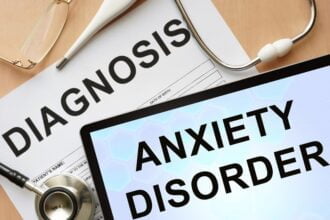Sick Building Syndrome (SBS) is a term that’s increased in popularity since its introduction in the 1970s. It’s essentially a term used to describe the phenomenon in which the occupants of a specific building begin to notice acute health and wellness problems that have no specific cause. The term is generally used when the only correlation to a specific illness is the building in which each of the subjects spend a large amount of time.
Sick Building Syndrome (SBS) is a term that’s increased in popularity since its introduction in the 1970s. It’s essentially a term used to describe the phenomenon in which the occupants of a specific building begin to notice acute health and wellness problems that have no specific cause. The term is generally used when the only correlation to a specific illness is the building in which each of the subjects spend a large amount of time.
In most cases, SBS is associated with brand new or newly remodeled buildings, and the cause is generally pinpointed to issues with the building construction. Flaws in such integral systems as heating, air conditioning, and ventilation can wreak havoc on the upper respiratory system. In other cases, it’s associated with some kind of contaminant within the house, including, but not limited to, molds, improper exhaust ventilation, industrial chemicals used for cleaning and repairs, volatile organic compounds, and even some types of building materials.
This particular topic is hotly contested among medical professionals. Many believe that it’s a viable explanation for many unidentifiable sicknesses they see in clinics and hospitals around the world. Others believe that it’s a superstition or mental bias that causes the sickness. Either way, here are some of the most popular theories regarding Sick Building Syndrome.
20 Percent of the Building Must Be Exhibiting Symptoms for It to Be SBS
The American Standards for Heating, Refrigeration, and Air-Conditioning Engineers (ASHRAE) have specific standards regarding the health and wellness of buildings. According to these standards, 20 percent of the occupants within the building must voluntarily claim that they’re experiencing consistent discomforts and symptoms in order for the building and patients to be diagnosed with SBS.
At this point, healthcare professionals have a harder time ignoring the problem. Typically, if the complaints go on for at least two weeks, and the symptoms improve significantly when the occupants are away from the building, the medical professional can conclude that SBS is causing the ailments.
Inadequate Landlord Attention Can Lead to SBS
Often, one of the most common causes of SBS stems from the improper care of a building on the part of a landlord. Failing to keep the building clean and maintained can lead to a lower cost of living and unhealthy tenants. Under the terms of every building contract, landlords must “ensure the property remains both fit and habitable throughout the lease,” says a blog post from Green Residential, property management experts. In addition, the post says that landlords must “stay familiar and up-to-date with local building, safety, and health codes.” Failure to do so can result in a building leading to Sick Building Syndrome.
When working to diagnose SBS in a patient, medical professionals can learn a lot from interviewing the patient about their landlord. Discovering that the landlord is inattentive can also lead to discovering treatment, specifically prompting the patients to talk with their landlord (involving legal help if necessary) about improving the state of the building. In some cases, moving to a building where the landlord takes excellent care of the property will be the best solution.
There Are Several Surprising Treatments for SBS
Moving away from the property isn’t the only solution for SBS, even though that would probably be the most effective. There are actually several treatments that have been shown to reduce the problem and symptoms of SBS, including:
Reducing stress and stressors
Seeking proper and frequent maintenance of the HVAC and ventilation systems
Buying toxin-absorbing plants
Increasing the frequency of air exchanges (a minimum of 8.4 is recommended according to ASHRAE)
Using weaker chemicals in industrial cleaning products, perhaps switching to household products if possible
Vacuuming frequently with a HEPA filter vacuum cleaner, which will collect 99.97 percent of particles
Repairing roofs and walls to remove problems with mold and other fungi contaminants
Each of these steps will help to both treat and prevent SBS, though it may not be enough. In extreme cases, a thorough inspection and subsequent remodel will be the only effective treatment to rid the building and occupants of the illness.
SBS is becoming more common, as are the solutions for the problem. Just as contractors are working to reduce the number of flaws within the buildings they construct, medical professionals and researchers are working to identify the causes and solutions for SBS in order to present viable treatment options for the cases they encounter.







